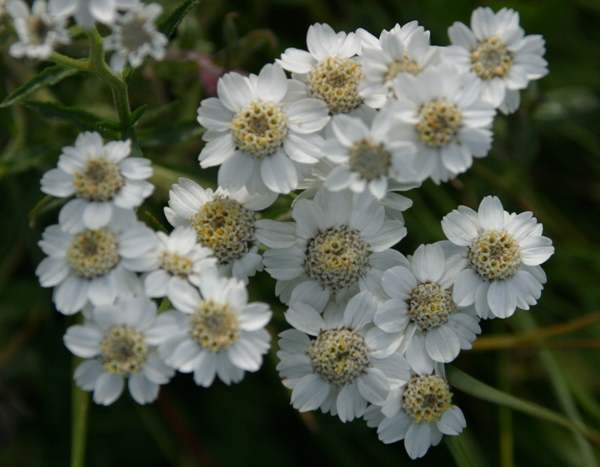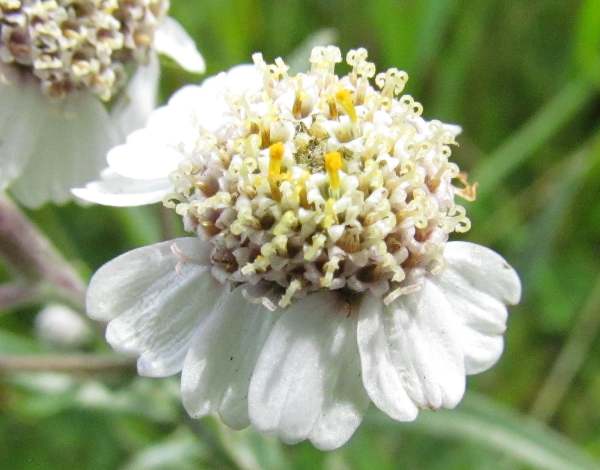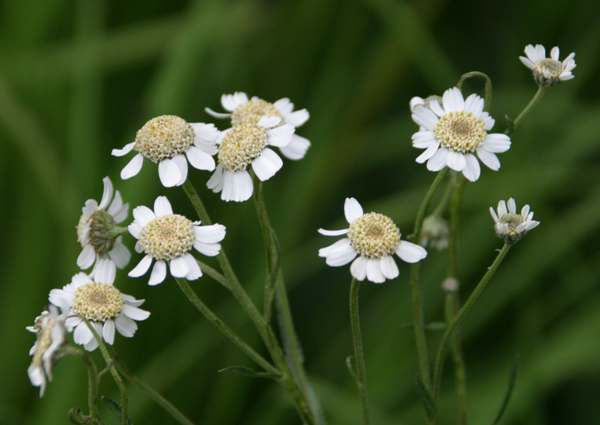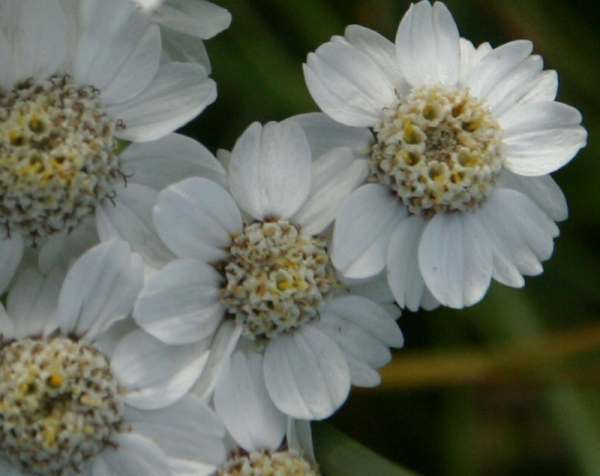Achillea ptarmica - Sneezewort
Phylum: Magnoliophyta - Class: Equisetopsida - Order: Asterales - Family: Asteraceae
Identification - Distribution - Habitat - Blooming Times - Uses - Etymology
Sneezewort is an attractive perennial plant that thrives on clay and tolerates acidic soils.
Description
This downy perennial wildflower, typically 30 cm tall but occasionally exceeding 0.5m, has a pungent scent (hence its common name). The flowers have eight or sometimes more white (never pink) barrel-shaped petals (outer rays) around a disc of tubular florets.
Many other common names have been given to this wildflower including Sneezeweed Yarrow, Bastard Pellitory, Wild Pellitory, and White Tansy.

Distribution
Less common than its close relative Yarrow, Sneezewort is found throughout Britain and Ireland as well as on mainland Europe.

Habitat
Sneezewort is most often found on damp acid grassland and frequently beside streams, especially on heavy clay-based soils. Other sites where you are likely to find Sneezewort include heathland, watermeadows and marshes.
Blooming Times
The flowers first appear in July and sneezewort usually continues blooming into September.
Uses
Like its close relative Yarrow, this plant has many traditional uses. The roots were used to induce sneezing (not to cure it!).

Chewing the roots of Sneezewort was a recommended treatment (if not a guaranteed cure) for toothache - although whether the offending tooth was to be sneezed out of its socket remains unclear! In the past, dried and powdered leaves from this plant were been used as a 'sneezing powder'. Medicinal properties are also claimed for an essential oil that can be extracted from Sneezewort leaves which, despite being bitter tasting, have also been used in salads. Given that this wildflower is known to be seriously poisonous to some farm animals, including cattle and horses, we cannot recommend Sneezewort for human consumption.
Bridesmaids at Westountry weddings used to carry posies of Sneezewort in the belief that doing so would ensure a happy life for the bride and groom. Checking the county-by-county divorce rates might show whether Achillea ptarmica is an effective potion in this respect!
(We strongly advise against eating or using as medicines any plants without first obtaining qualified professional advice.)
Similar Species
Yarrow, Achillea millefolium, is generally a taller plant with finely divided leaves; it has much smaller flowers with just five petals.
Etymology
The botanical name Achillea stems from the belief that Achilles used flowers of this genus to cure his soldiers' wounds; ptarmica, the specific epithet, comes Greek and means to cause a sneeze.
The Sneezewort plants shown on this page were photographed in the Cambrian Mountains region of Wales, UK.
Sue Parker's latest ebook is a revised and enlarged edition of Wild Orchids in The Burren. Full details here...
Buy it for just £5.95 on Amazon...
Please Help Us: If you have found this information interesting and useful, please consider helping to keep First Nature online by making a small donation towards the web hosting and internet costs.
Any donations over and above the essential running costs will help support the conservation work of Plantlife, the Rivers Trust and charitable botanic gardens - as do author royalties and publisher proceeds from books by Pat and Sue.

